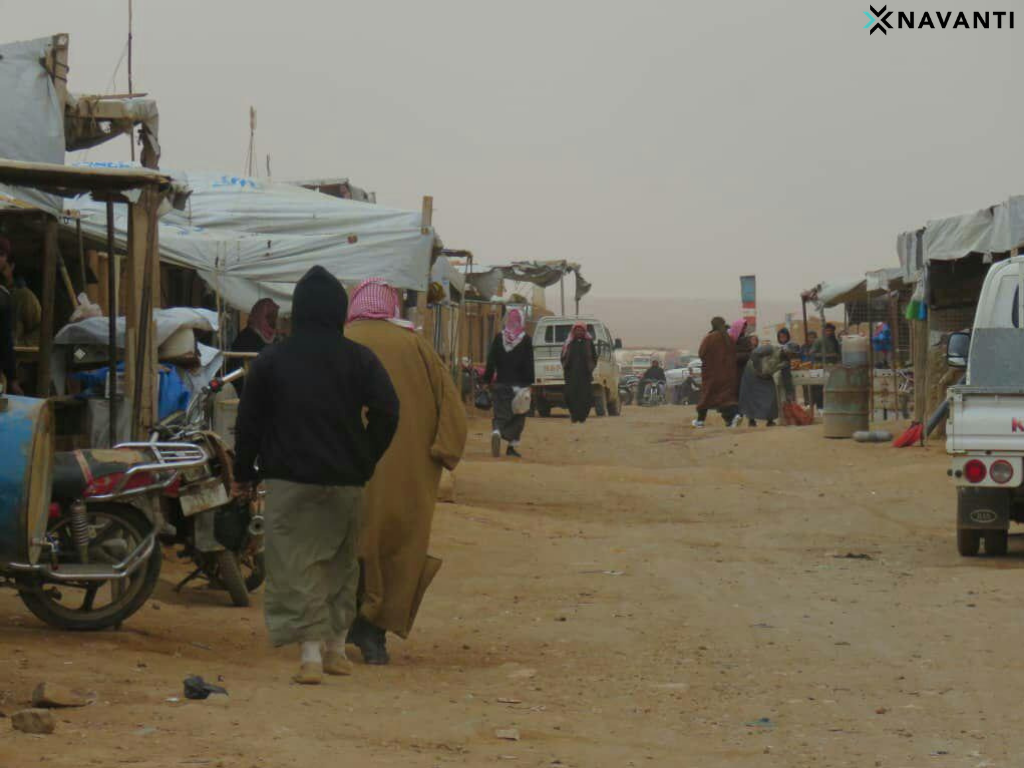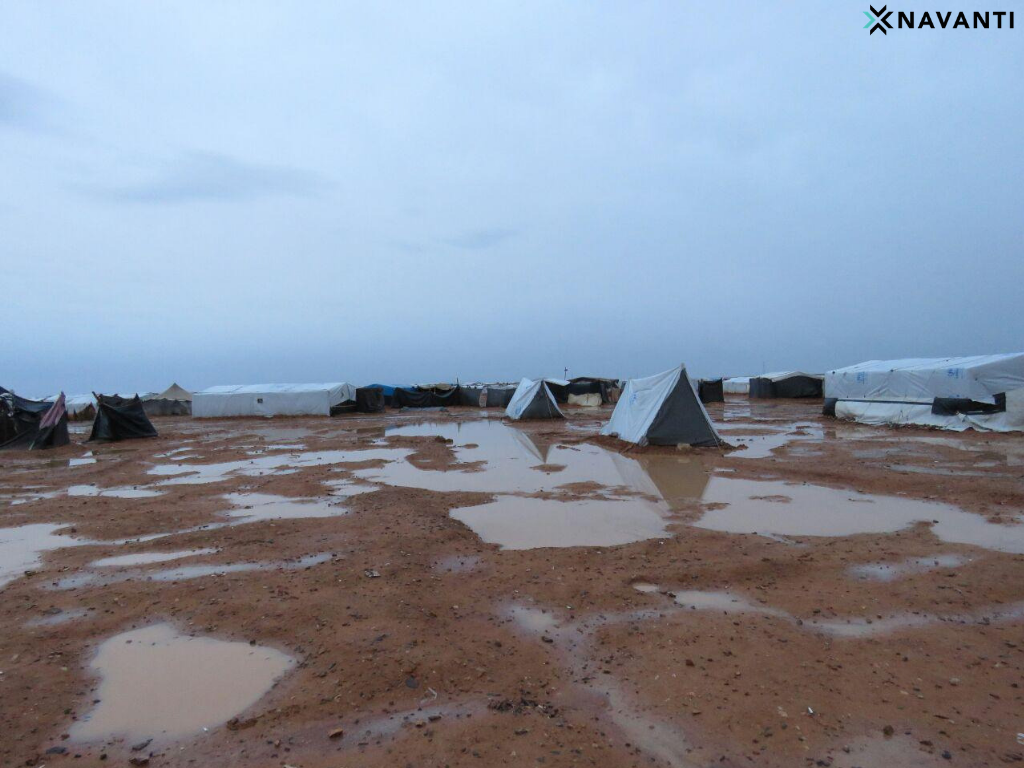Syria’s Rukban camp for internally displaced people (IDPs), located in the eastern desert of Homs province, is a contender for the most inhospitable location imaginable for civilians living through the ongoing civil war.

Market in Rukban. Source: Navanti
Rukban was formed in mid-2014 after Jordan began to close its borders with Syria, faced with a massive influx of refugees that Jordanian officials say represent a strain on the national economy and security. IDPs from Homs and Deir al-Zour provinces, fleeing ISIS violence and Syrian government airstrikes, streamed into the camp complex, which coalesced into a makeshift settlement near the Jordanian and Iraqi borders and housed 85,000 residents at its peak in 2016.

Stagnant water surrounds camp residences. Source: Navanti

Dirt paths between tents turn into shallow streams when it rains. Source: Navanti
Today, an estimated 40,000-50,000 people, mostly women and children, remain in Rukban. An acute lack of services, and the persistent threat of sexual abuse and harassment, characterize life for many residents.
The camp is situated within the 55km exclusion zone established by the US-led International Coalition around the al-Tanf base in eastern Syria. Civilian authorities inside Rukban say Russia, and the Syrian government, hinder the delivery of humanitarian aid, imposing a blockade in an attempt to force camp residents to return to government territory. The last convoy of aid arrived in al-Rukban three months ago, laden with enough supplies to last residents for one month.

“Rukban is in a desert area that lacks the most basic services necessary for life—electricity, water, hospitals, work opportunities. And the weather is harsh in the summer and especially the winter…our children die because of the severe cold.” — Camp resident originally from Palmyra
At least eight children died in al-Rukban because of the cold, and a lack of medical care, from December 2018 to February 2019. Common acute diseases in the camp include respiratory infections, urinary tract infections, skin infections, and watery diarrhea, while chronic conditions, many of which go untreated for a lack of medicine, include asthma, diabetes, and hypertension.

One of several makeshift medical clinics in the camp. Source: Navanti
Despite miserable living conditions and a near total absence of services and aid, Rukban residents do what they can to make a living.

Resident-owned internet cafe. Source: Navanti
The camp has a market where people can buy essential goods.

Market in the Rukban camp. Source: Navanti
Until the realization of a deal with sufficient guarantees for their safety, Rukban residents are staying put. They do not trust Syrian government assurances they will not be mistreated, detained, or conscripted into the military upon their return home. Instead, many wait for an opportunity to cross into rebel or SDF-held territory in northern Syria, or into Jordan.
“I would leave this camp for the Syrian north, where there’s no regime to arrest us or humiliate us. Of course provided I had the opportunity—if there was an official agreement.” — Camp resident originally from al-Qariyatein, Homs

